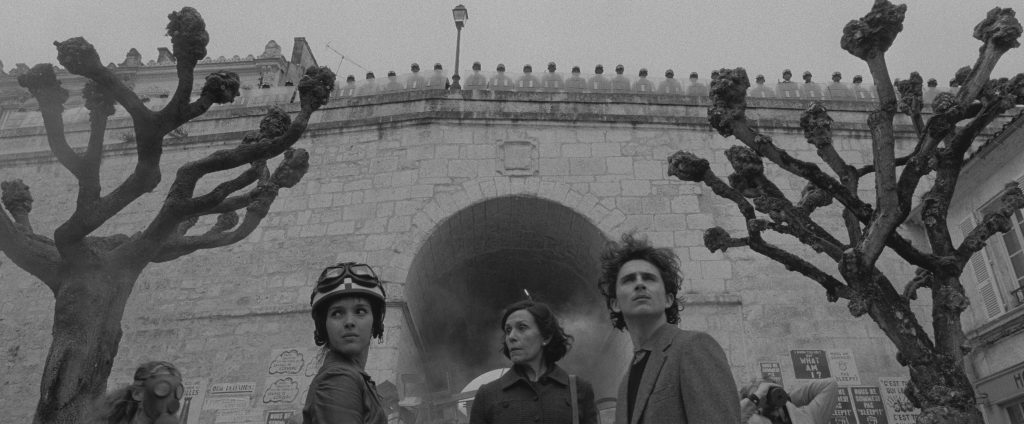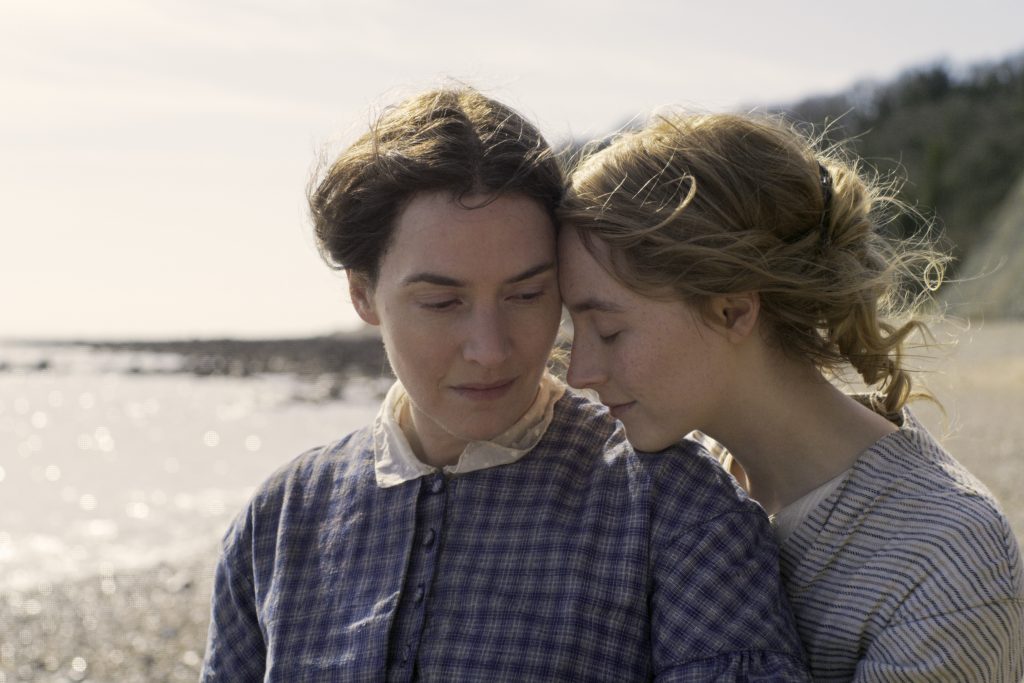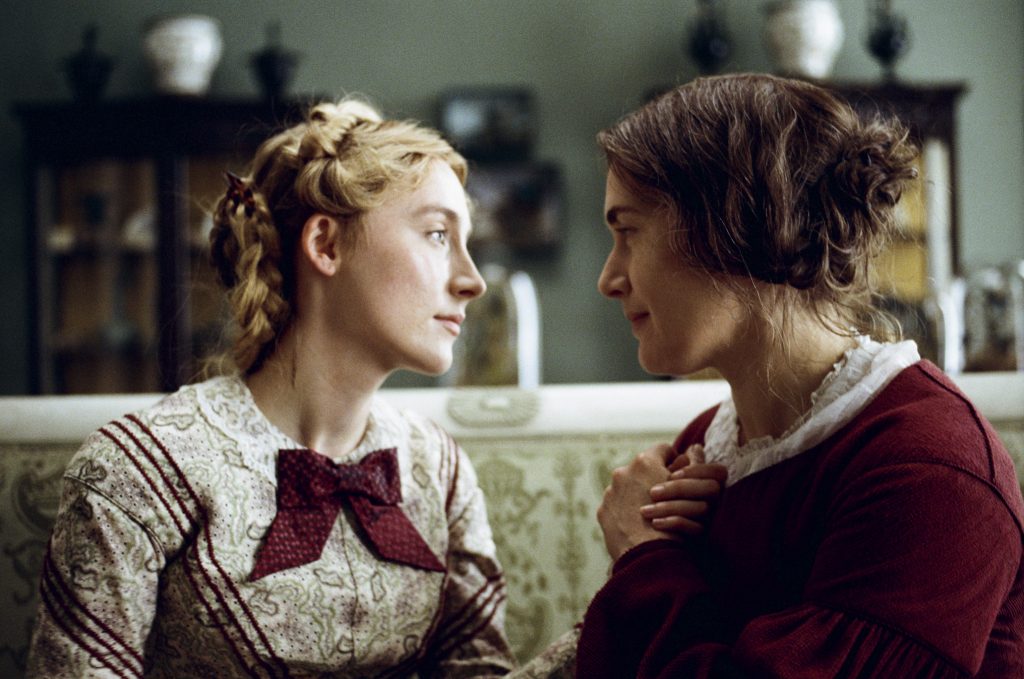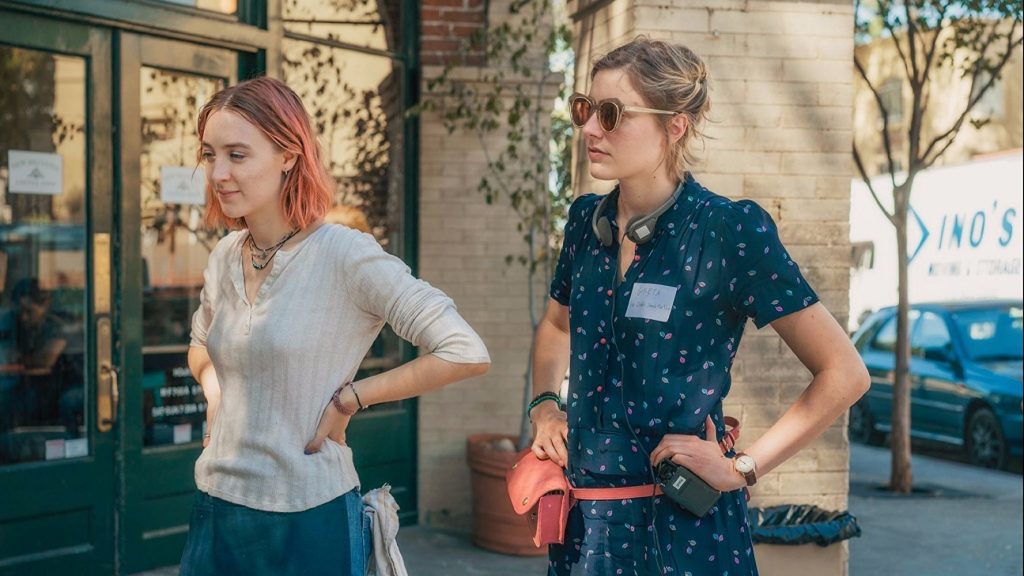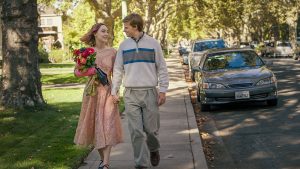October 1, 2023
by Carla Hay
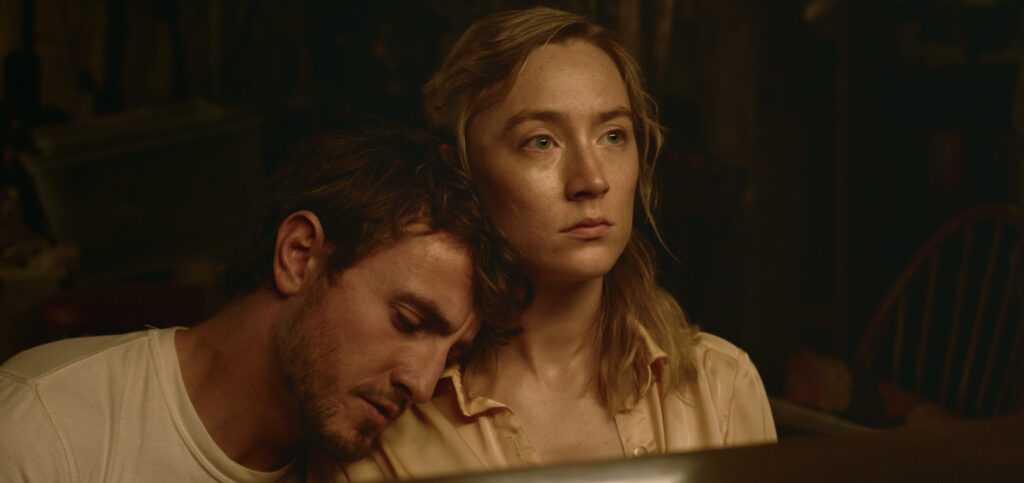
Directed by Garth Davis
Culture Representation: Taking place in an unnamed Midwest state in the United States, the sci-fi drama film “Foe” (based on Iain Reid’s novel of the same name) features a predominantly white cast of characters (with one black person) representing the working-class and middle-class.
Culture Clash: After an environmental apocalypse has left Earth deprived of many resources, a married farming couple must decide what to do when the husband is selected to live in an outer-space colony populated by humans who used to live on Earth.
Culture Audience: “Foe” will appeal primarily to people who are fans of stars Saoirse Ronan and Paul Mescal and the book on which the movie is based, but this movie trudges through a lot of time-wasting scenes and that do a substandard job of telling the story.
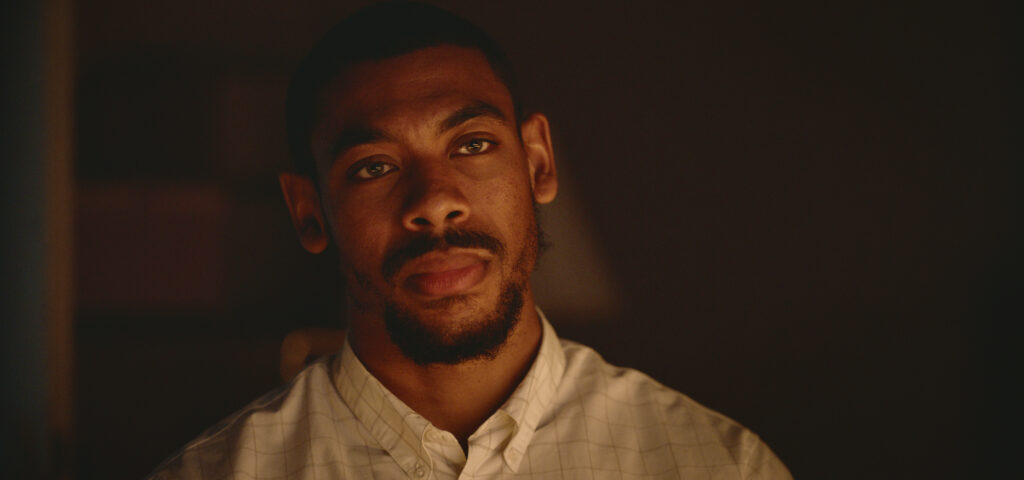
The pretentiously dull sci-fi drama “Foe” wants to say a lot about humans choosing between living on Earth or living somewhere else, but fails to tell anything substantial about the couple at the center of the story. Good acting can’t save this weak script. This cinematic dud had the potential to be a fascinating character study about a married couple facing a truly life-changing dilemma. Instead, “Foe” is a clumsy slog of disjointed scenes and hollow characters that will leave viewers feeling disengaged and not very interested in what happens to these two discontented spouses.
Directed by Garth Davis, “Foe” is based on Iain Reid’s 2018 novel of the same name. Davis and Reid co-wrote the disappointing “Foe” screenplay. “Foe” had its world premiere at the 2023 New York Film Festival. Although the movie’s relatively small number of principal cast members are very talented (only three people in “Foe” have significant speaking roles), they are limited to a very flawed screenplay that is like a car being stuck in the mud while spinning its wheels. Expect to see many dead-end scenes of marital spats, tentative truces, and then more spousal arguing.
The main location in “Foe” (which takes place in an unnamed Midwestern state in the United States) is the remote and desolate farm property of married couple Henrietta, nicknamed Hen (played by Ronan), and Junior (played by Mescal), who have been spouses for an unnamed period of time. (“Foe” was actually filmed in Queensland, Australia.) Almost nothing is shown or told in the movie about the personal histories of these two frequently quarrelling spouses, except that Junior inherited the farm, which has been in his family for five generations. Don’t expect to find out how and why Hen and Junior fell in love with each other.
The story takes place in an unspecified time period, after an environmental apocalypse has left a ravaged Earth depleted of many resources. Hen and Junior (who do not have children and do not live with anyone else) do what they can to scrape by in their meager existence. But mostly, they just hang around the house and have tension-filled conversations. Hen is often standoffish and abrupt when Junior shows her affection or when he wants to get sexually intimate with her.
“Foe” begins with the arrival of a mysterious stranger named Terrance (played by Aaron Pierre), who visits the couple’s farmhouse unannounced. Terrance, who wears a casual business suit, tells Hen and Junior that Junior is on the shortlist of a special lottery where Junior can live in another place in the universe where other humans have settled and where there are more resources and a more comfortable way of life. This other place is never named or described, but it’s referred to as “up there.” Terrance doesn’t say who employs him, but it’s implied that he works for the U.S. government.
Of course, the problem with this offer of a better life “up there” is that this offer does not include Hen. Terrance never explains how and why Junior was chosen for this lottery in the first place. Junior refuses to leave Hen, while Hen doesn’t seem to give Junior many reasons to stay, because she is very moody and argumentative with him. Hen also has a nasty temper and will throw things or get violent when she’s angry. Spaceships hover around from time to time, with no real explanation. And sometimes, men in suits randomly show up and try to kidnap Junior.
One of the weird things about “Foe” is that it tries to make it sound like resources have been scarce in this world for many years, but then the movie shows other things that contradict that concept. Junior tells Hen that he has fond memories of when the farm had livestock when he was a child. And when Terrance comes to visit, Terrance tries to entice Junior to go “up there” because he says people don’t have to worry about having enough food “up there,” compared to on Earth.
But then, there are multiple scenes of Junior working on an assembly line at a chicken processing factory that is filled with skinned and headless chickens. It doesn’t look there’s a food shortage at all—at least not at this place of business. Likewise, Hen has a job as a waitress at a casual restaurant, and there’s no mention of food shortages when she’s on the job. It’s implied that Hen and Junior have been unable to make a living from their farm, so they’ve taken jobs elsewhere.
The movie hints that Hen and Terrance (who always shows up unannounced) start to feel an attraction to each other. Junior predictably gets jealous. This boiling cauldron of emotions would only work well for this movie if it gave viewers reason enough to care about any of these lackluster and uninteresting people. Junior is the only one of the three who acts like he cares about others. Hen is mostly selfish and miserable. Terrance seems to take delight in seeing rifts between the couple, because apparently, Terrance has been tasked with getting Junior to go live “up there,” no matter what the personal cost.
“Foe” is a very dark and dreary movie, not just in its visuals but also in much of its tone and mood. There’s only one scene where there’s a hint that Hen and Junior had a great relationship in the past. They are both outside, when Junior asks Hen not to wear the white shirt that she is fond of wearing. When she asks why, he says it’s because it’s the same shirt she wore when they met, and it reminds him of the time when “we were happy.”
Hen and Junior have no friends or family members in their lives. And so, viewers are stuck watching this couple fight, reconcile, and then fight again. And then, Terrance occasionally shows up to have slow-paced conversations with Hen. This drudgery is the majority of “Foe,” which raises many questions that the movie never bothers to answer. There’s a drastic plot development that’s thrown into the last 20 minutes of the film, but it’s as phony and sloppily explained as the vague “up there” utopia that’s supposed to be the reason for the separation conflicts that could have made “Foe” an intriguing movie.
Amazon Studios will release “Foe” in select U.S. cinemas on October 6, 2023.




